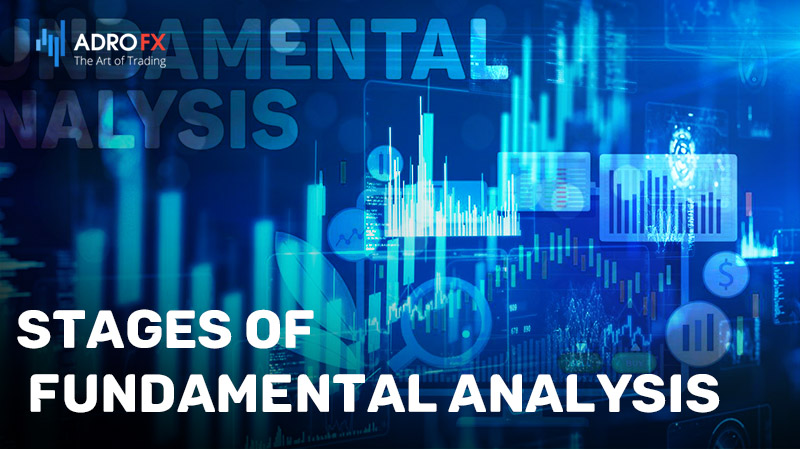Basic Concepts of the Stock Market and Their Applications

A stock market is a trading floor where stocks listed by companies are traded through direct exchanges between multiple parties (OTC). This kind of interaction is called a stock exchange. It is one of the most important elements of the modern economy. The exchange provides companies with the opportunity to raise additional capital. A buyer can acquire ownership of a business.
As a result of entering the stock market, one can count on a fixed earnings. Even to the detriment of the financial returns of the company itself. According to the principles of the stock exchange, those who own securities have this right. When a company develops, those who wish to make a deposit will receive income in the form of dividends. There is also an opportunity to sell shares at a price higher than the cost of buying them. The disadvantage is that the capital can be lost. This happens if harm is done to the company due to mismanagement or other reasons.
In this article, we will learn the basic notions of the stock market, discover how it works and it can be analyzed to benefit from stock price fluctuations.
How Does the Stock Market Work?
Shares are traded on the secondary or primary market. Participants in the primary receive offer from the companies themselves (IPOs). Here, the price is formed based on the estimated expectations for the development of a particular enterprise. The number of issued shares is also considered. Investors seeking to invest in funds purchase a substantial portion of these securities from investment banks.
The rest of the transactions are made on the secondary market. Retail investors act as participants at this stage. The stocks are always examined on secondary product exchanges. The stock market ensures organized trade. It redistributes free funds and property rights. The main function of a marketplace is to support liquidity. This is called the ability to quickly sell an asset at the market price.
Stock Market Analysis: Basic Fundamental Tools
The analysis with the use of basic instruments appeared at the beginning of the 20th century. The fundamental approach is based on the study of the dynamics of stock. The theory includes forecasting the development of firms. The research is conducted with the use of financial instruments. Economic conditions are evaluated. All the key factors of the economy are important. They influence the value of assets. The basic principles of analysis are:
- The value of assets in the underlying market. Determined by major development trends and other factors;
- Current price fluctuations. Form the natural background. It can be ignored by the general view of the possible movement of the level of return on the stock;
Rate volatility. Passively reflects the real value of the underlying stocks.
Of course, each stock has its benchmark level. The market indicator is directly related to this. The price of a stock that exceeds a fair value is overvalued. The one who wants to buy such an asset is exposed to risk.
Stages of Fundamental Analysis

For the analysis, experts distinguish industry and macroeconomic market dynamics, microeconomic and value modeling. The first two steps are related to data collection. At the initial stage, the economic environment is important. It consists of three parts: macroeconomic studies and industry studies. The second step explains how the stock market works. An econometric model must be created in the process of modeling the price of the asset. It is used to calculate the value of the company's assets. The necessary data is prepared based on the information processed in the initial two stages.
Macroeconomic research. It allows for obtaining the appropriate indicators for future quotes. They determine the country's economy and take into account the following: GNP, inflation, employment, exchange rates, and more. Conducting analyses will allow you to find out how attractive the economy is for investment.
Research on the stock market. Evaluation of the companies involved in trading has two main indicators: liquidity and volatility index. Market liquidity is the ability to absorb changes in asset demand and supply. It often manifests itself without significant fluctuations in dynamics. Volatility is very much related to the risk of investing in monetary assets. The presented activity is analyzed based on an assessment of the intrinsic value of securities. The theory determines the relationship between trading instruments.
Industrial research. Concludes in the determination of activity indicators. Involves a qualitative study of the development of a market segment. The activity of the company, which is important at this stage, is very closely linked to the evaluation of expectations. The financial situation is also important, allowing hope for development. All of this data should be reflected in the financial statements.
Pricing modeling. At this stage, the earnings potential of the enterprise is evaluated. In the process of the prepared calculations, the investment risk is learned. It is often explained by an econometric model. The latter is among the economic and statistical tools, the parameters of which are evaluated using mathematical methods. The calculation is carried out based on statistical information. Once the potential return on investment and the level of risk have been determined, a calculation of the fair value of the asset will be required. Discounting future financial flows is considered to be the most common method of calculating the reasonable price of securities. The economic value added method is also effective.
Development of Basic Analysis
The evolution of investment theories and their relationship to methods of stock value analysis began in the 18th century. The first step was the development of the Efficient Market Hypothesis (EMH). The first publication that used statistical methods to study the market appeared in 1900. It was the work of L. Bachelier. He applied research methods to stocks, bills, futures, and options. The biggest advantage of his work was the discovery of the following fact: the process of securities value change behaved like a Brownian motion. The experts concluded that every random variable has a distribution function. It is presented in the form of a Gaussian operation. The probability ultimately depends on the value of the random variable.
In the 1930s, several more articles on the subject of fundamental analysis were published. They included conclusions on the studies of Bachelier and Wiener. Based on the studies presented, it was possible to come to the following conclusion: it is impossible to make more returns than the market average.
Difficulties of Perception
For a long time, investors did not take the works of fundamental analysis seriously. This was until the early fifties of the twentieth century. After computers were used to study time series, the situation changed dramatically. The main goal of subsequent studies was the evolution of stock prices. If they reflected a company's expectations, it was assumed that the economic performance of the company should manifest itself by a periodic repetition of ups and downs. In 1953, Kendall was the first to test this hypothesis. He demonstrated the cyclical nature of stock prices and commodity behavior.
The Importance of Information Noise
Stock exchanges and other financial platforms are global systems with a high degree of freedom. With this in mind, investors tend to believe that the current price should constantly reflect the information available to all. The value changes as new data become available. The most recent formal result of these observations is the result of the work of Fahm. He argued that the market is fair game: data cannot be applied for gains. A marketplace that reflects all known prices is considered efficient. To ensure that the information is presented effectively, the following conditions must be met:
- There are no transaction costs, taxes, or other factors that impede contracts;
- All participants in the market are rational and trying to increase expected returns;
- Transactions made by a company or individual are not reflected in the overall price dynamics;
- Collaboration data is available to each market participant in real-time, and this reporting has no relationship to costs.
None of these four conditions are observed in the real market: funds and time are always needed to get important data. Because these requirements are not met, differences emerge.
In a perfectly efficient marketplace, when all of the above conditions are met, prices always reflect all of the known information. New data leads to instantaneous changes in dynamics, and super returns are only possible by chance. In an efficient marketplace, asset values cannot react immediately to incoming data. If information and other costs are suppressed, extra earnings can be avoided. This is the difference between the optimal efficiency of market information and economic data. The following types of lucrativeness estimates are distinguished in this regard:
- Low. It is assumed that all information about past price changes is fully reflected in current market prices;
- Medium. Current market prices reflect not only past price changes but also all publicly available information;
- High. The information reflected in the current market prices is publicly available.
Modern Fundamental Analysis
The next step in the development of modern fundamental analysis was the emergence of the theory of portfolio investments. Specialists tend to think that investors should have assets with the highest expected return at a certain level of risk. This concept was developed by William Sharpe, J. Lintner, and J. Mossin. The result was the Capital Asset Pricing Model (CAPM). It combined the efficient market assumption with the Markowitz mathematical model.
CARM was developed for efficient platforms with a normal distribution of returns. Markowitz explained why diversification leads to lower risk. Based on CARM, it is possible to understand how investors should behave. The combination of Markowitz's theory and CAPM and its modifications was known as the new portfolio theory.
Technical Analysis
Technical analysis is an estimation of market dynamics. It is carried out for forecasting price changes. Obtaining time series will reflect the value of assets, transaction size, and other data. In contrast to basic analysis, it assumes that the macro and microeconomic component is already taken into account in the price and size of the financial instrument. Such a principle is associated with the immutability of the data chosen by investors, as well as the behavior of people on the exchange. Technical analysis does not give an exact evaluation. In most cases, it helps to determine the current market dynamics. The following classification is used for the tools of technical analysis:
- Computed. It is carried out by using oscillators and market trend indices;
- Graphical. Reveals repetitive cycles of price dynamics and other indicators.
Technical analysis is a statistical analysis method that is more uncertain. It is conducted according to a standard set of rules. Price dynamics can be interpreted in several ways. Using technical analysis methods, it is possible to recognize trends and returns, but the possibility of an accurate result is not guaranteed. To find stronger investment ideas, you need to go deeper into the research.
In-depth Analysis of a Company's Internal Environment
In most cases, an investment and financial analysis will suffice to make a stock purchase decision. However, this will be superficial data. Stable investments in the long term require a comprehensive approach. Examples of promising companies in the American market: Walt Disney, Apple, and Johnson & Johnson. They are similar in that they all have excellent financial ratios, low p/e for their industry, stable market position, and stable growth dynamics.
About AdroFx
Established in 2018, AdroFx is known for its high technology and its ability to deliver high-quality brokerage services in more than 200 countries around the world. AdroFx makes every effort to keep its customers satisfied and to meet all the trading needs of any trader. With the five types of trading accounts, we have all it takes to fit any traders` needs and styles. The company provides access to 115+ trading instruments, including currencies, metals, stocks, and cryptocurrencies, which make it possible to make the most out of trading on the financial markets. Considering all the above, AdroFx is the perfect variant for anyone who doesn't settle for less than the best.










